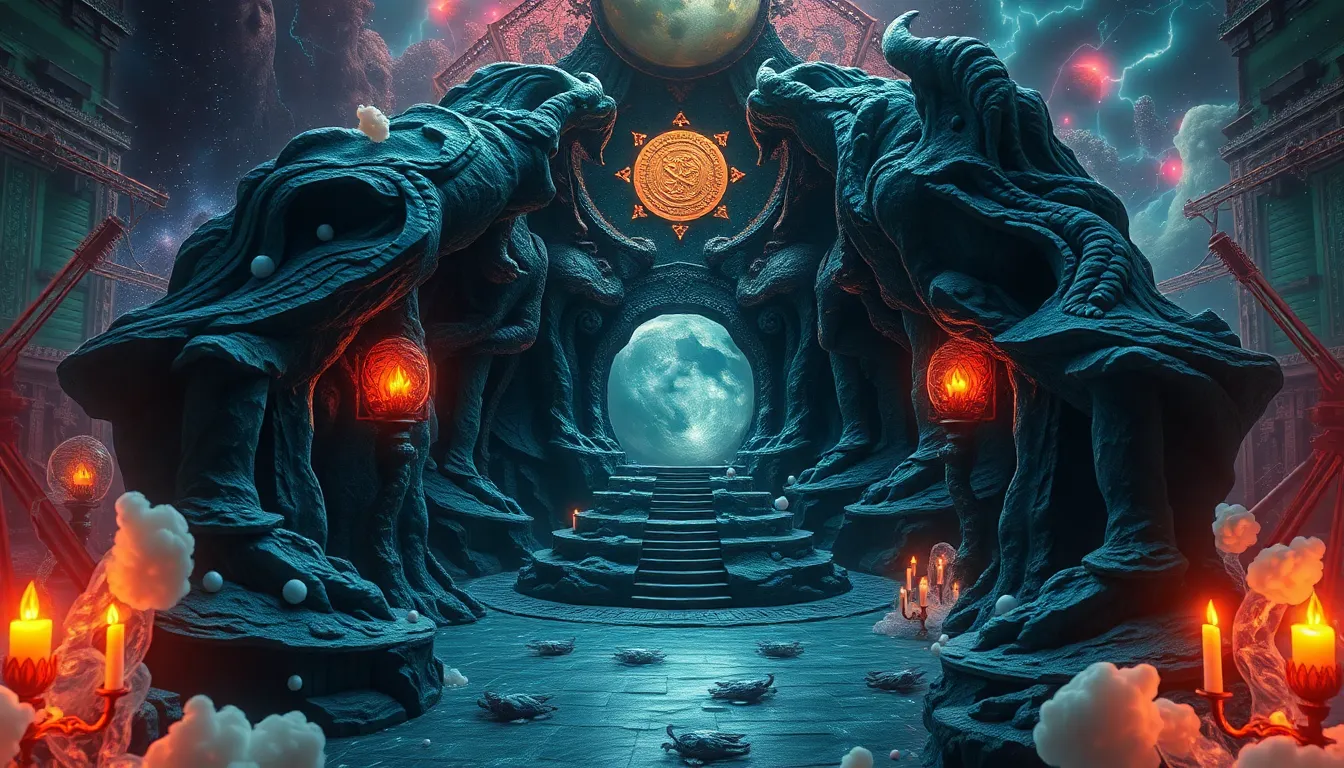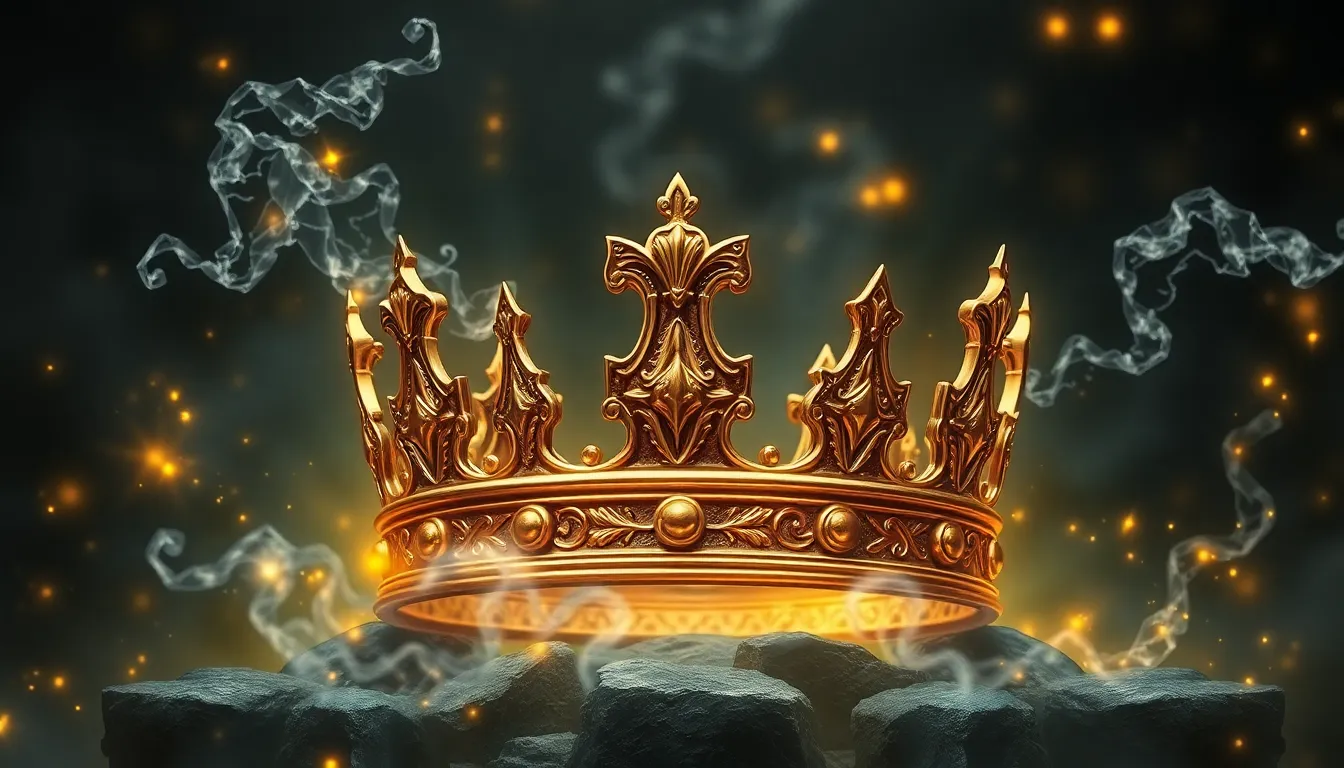What If Everything Started with a Dream? The Most Surreal Creation Myths
I. Introduction
The concept of creation myths spans across cultures and civilizations, weaving narratives that explain the origins of the universe, humanity, and the natural world. These myths serve as foundational stories that provide meaning and context to existence, often reflecting the values, beliefs, and aspirations of the societies that tell them.
Dreams, in particular, hold a significant place in many cultural narratives. They are often viewed as glimpses into the subconscious, portals to the divine, or as sources of inspiration. The exploration of surreal creation myths invites us to consider the possibility that everything we know might stem from a dream, blurring the lines between reality and imagination.
This article will delve into the nature of dreams within mythology, examine notable surreal creation myths from various cultures, and explore the broader implications of these narratives in both ancient and modern contexts.
II. The Nature of Dreams in Mythology
A. The role of dreams as a source of inspiration
Throughout history, dreams have inspired countless stories, artworks, and philosophies. Many ancient poets, artists, and thinkers regarded dreams as direct messages from the gods or the universe. These dreams often provided not only inspiration but also guidance on moral and existential questions.
B. Dreams as a bridge between the conscious and unconscious
Dreams serve as a connection between the conscious mind and the unconscious, allowing individuals to access deeper truths and insights. In many creation myths, this bridging function is crucial, as it facilitates the transition from chaos to order, reflecting the dual nature of existence.
C. Cross-cultural perceptions of dreams in ancient civilizations
Different cultures have perceived dreams in various ways. For instance:
- In ancient Egypt, dreams were seen as messages from the gods.
- In Greek mythology, dreams were believed to be prophetic and often involved divine intervention.
- Indigenous cultures often view dreams as vital components of spiritual life, reflecting both personal and collective experiences.
III. The Dreaming Goddesses: Myths from Ancient Civilizations
A. Gaia and the Dream of Creation in Greek Mythology
In Greek mythology, Gaia, the personification of Earth, is said to have given birth to the sky, mountains, and sea through her dreams. Her dreams manifested as the Titans, who further shaped the world. This myth highlights the nurturing aspect of dreams and their power to birth new realities.
B. The Enuma Elish: Marduk’s dream and the birth of the world
The Babylonian creation myth, Enuma Elish, centers on Marduk, who dreams of a great battle against the chaos monster Tiamat. His victory leads to the creation of the world. This narrative illustrates the transformative power of dreams in establishing order from chaos.
C. The Dreaming in Aboriginal Australian mythology
In Aboriginal Australian culture, the Dreamtime is a complex belief system that describes the creation of the world through the dreams of ancestral beings. These stories reflect deep connections to land, identity, and spirituality, emphasizing a worldview where dreams are integral to existence.
IV. Surreal Creation Myths from Around the World
A. The Hindu concept of Vishnu’s cosmic dream
In Hindu mythology, the god Vishnu is said to dream the universe into existence. His dream is a cosmic one, where realities unfold and merge through his divine consciousness. This myth emphasizes the interconnectedness of all beings and the illusion of separation.
B. The Kabbalistic view of creation through the divine dream
Kabbalistic teachings describe creation as a manifestation of God’s dreaming. The universe is seen as a reflection of divine thought, where every element participates in a cosmic dream. This perspective invites contemplation on the nature of reality and the divine.
C. The Māori myth of the creation through the dream of Ranginui and Papatūānuku
The Māori creation myth involves Ranginui (the Sky Father) and Papatūānuku (the Earth Mother), whose separation was born from the dreams of their children. This act of dreaming and separation illustrates the dynamic relationship between the earth and sky, and the myriad forms of life that emerge between them.
V. The Role of Chaos and Order in Dream-Based Myths
A. Chaos as the primordial state in creation myths
Many creation myths begin with chaos, a primordial state of formlessness or darkness. This chaos is often depicted as a necessary foundation from which order can emerge. The surreal nature of these myths reflects the complexity of existence, where creation arises out of disorder.
B. The emergence of order from chaos in dreams
Dreams often present a chaotic array of images and narratives that, upon reflection, can reveal profound insights and order. This duality mirrors the creation process in myths, where chaos transforms into structured realities through divine intervention or natural processes.
C. Examples of chaos and order in specific surreal myths
Some notable examples include:
- The Greek myth of Chaos giving birth to Gaia, who then creates order.
- The Enuma Elish, where Marduk’s battle represents the triumph of order over chaos.
- The Dreamtime stories, where ancestral beings navigate chaos to create the world as we know it.
VI. Symbolism and Imagery in Surreal Creation Myths
A. Common symbols found in dream-inspired creation stories
Surreal creation myths often utilize rich symbolism to convey complex ideas. Common symbols include:
- Water as a symbol of life and creation.
- Serpents representing transformation and rebirth.
- Light symbolizing knowledge and enlightenment.
B. The use of surreal imagery to convey deeper meanings
Surreal imagery in these myths serves to challenge perceptions of reality, inviting deeper contemplation. The blending of the fantastical with the real encourages audiences to explore the underlying messages about existence and creation.
C. The psychological impact of these symbols on cultures
These symbols resonate on a psychological level, influencing cultural identity and individual belief systems. They shape how communities understand their origins and their place in the universe, fostering a sense of belonging and continuity.
VII. The Influence of Surrealism on Modern Interpretation of Creation Myths
A. The connection between surrealism in art and myth
Surrealism as an artistic movement draws heavily from mythological themes, emphasizing dreams and the subconscious. Artists often reinterpret ancient myths, presenting them through a modern lens that reflects contemporary issues and experiences.
B. How contemporary creators reinterpret ancient myths
Modern authors, filmmakers, and artists explore surreal creation myths, reimagining them to address current societal themes. These reinterpretations often highlight the timeless nature of these narratives while infusing them with new meanings.
C. Case studies of modern works inspired by these myths
Some notable examples include:
- The film “Inception,” which explores dreams within dreams, echoing the complexity of creation.
- The novel “American Gods” by Neil Gaiman, which intertwines various mythologies in a modern context.
- Artworks by Salvador Dalí that embody surreal interpretations of classical myths.
VIII. Dreams as a Metaphor for Human Experience
A. The philosophical implications of creation myths starting with dreams
If everything starts with a dream, it raises profound philosophical questions about the nature of reality and existence. This perspective challenges linear understandings of time and creation, suggesting that all possibilities exist concurrently in a dream-like state.
B. Dreams as reflections of aspiration and potential
Dreams often symbolize human aspirations, embodying potential and possibility. Creation myths that originate from dreams highlight the importance of vision and imagination in shaping reality, encouraging individuals to pursue their dreams actively.
C. The connection between individual dreams and collective mythology
The interplay between personal dreams and collective mythology underscores the shared human experience. Individual dreams can resonate with cultural narratives, suggesting that personal aspirations contribute to the larger tapestry of myth and meaning.
IX. The Future of Creation Myths in a Dream-Centric World
A. How the digital age influences the creation of new myths
In the digital




